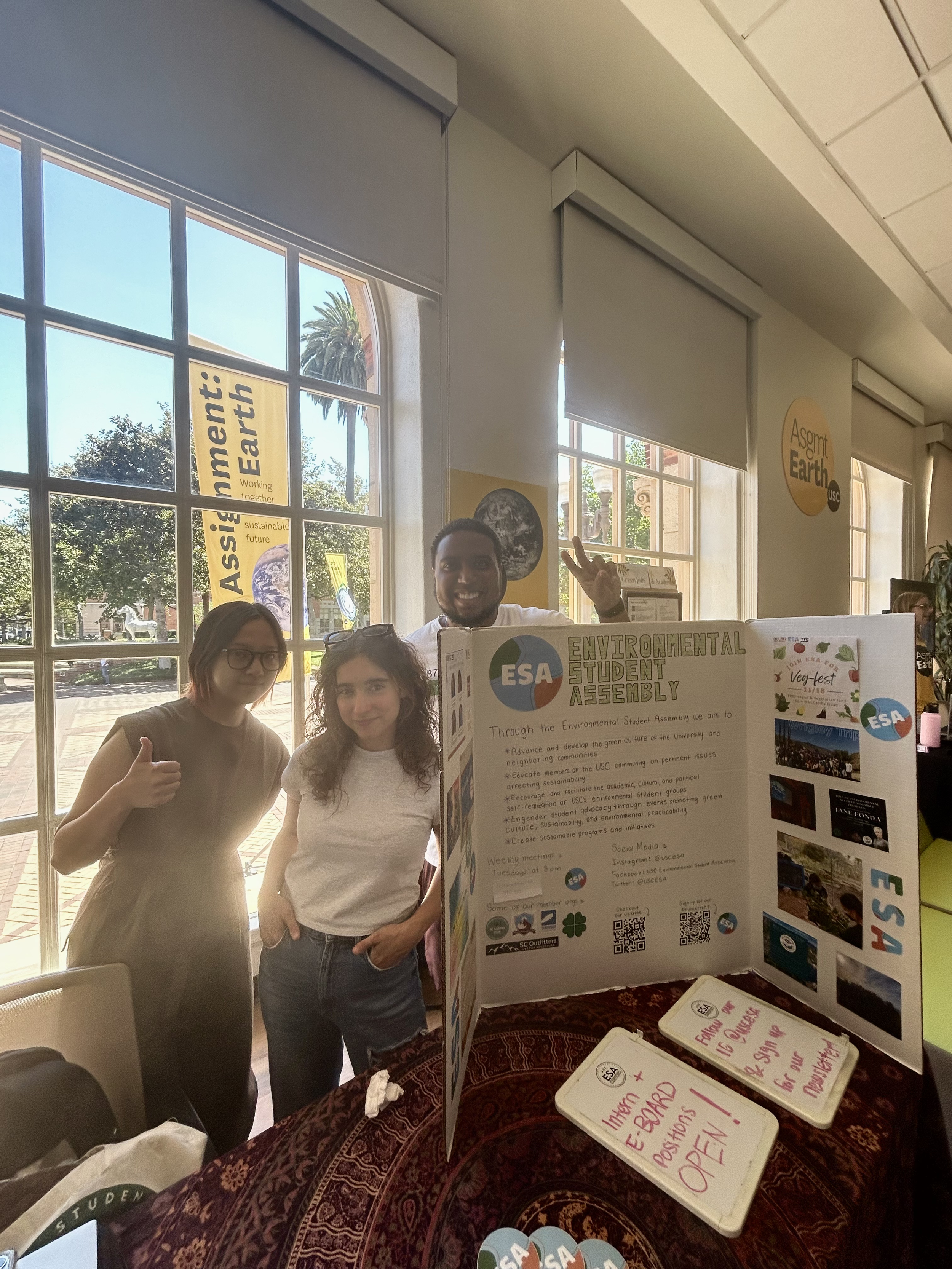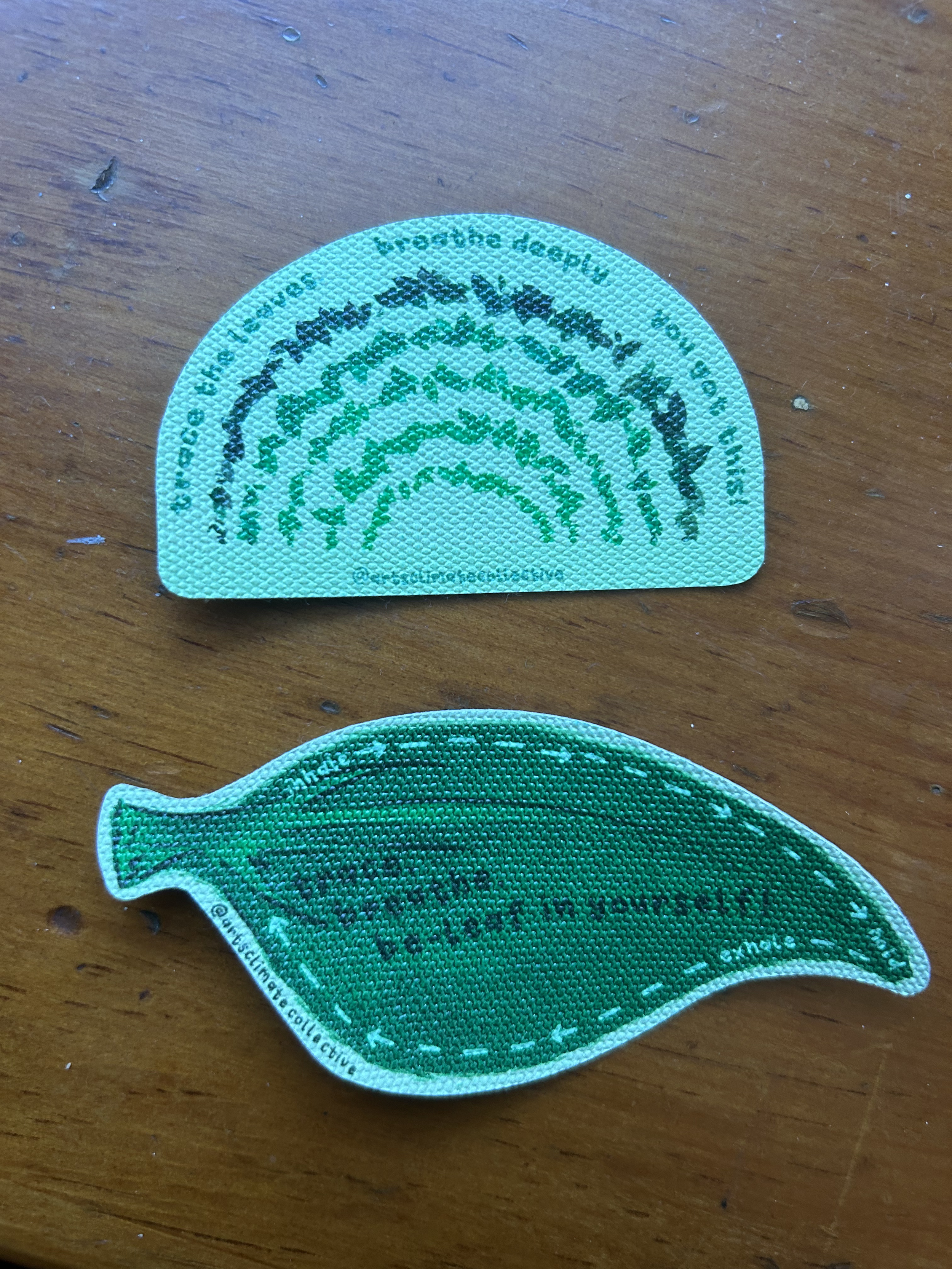Why You Need to Go to USC’s Sustainability Hub
By Kristen Adams
I am a senior in the Business of Cinematic Arts program at USC, so when I am on campus, I spend a majority of my time either in a breakout room in Fertitta or on a balcony in the School of Cinematic Arts. But I recently discovered a hidden gem on campus, a space in the Student Union that I think every student should enter at least once during their time at USC…
The Sustainability Hub! 🌱
I documented my first time entering the Sustainability Hub in a previous blog article, but I came back again for its Open House this semester. Here is how it went:
Photo Credit: Kristen Adams
I received this free mini pot with Zinnia seeds during the Open House! I have never tried to grow flowers before, so with lots of water, sun, and care, I hope that my little Zinnia will bloom in a few months. In the meantime, I have stuck a little fake plant inside... for aesthetic purposes for myself, and for motivation purposes for my Zinnia.
Sustainability is overwhelming. I know the basic tips: dispose of trash correctly, recycle and reuse when possible, turn off the lights when not using them, turn off the faucet when not using it, etc. Corporations have the biggest responsibility when it comes to sustainability: their actions have a large impact on the environment due to their scale. For example, as a Business major, we learn about Porter’s Five Forces, a model that identifies the competitive forces at work in an industry. One of the forces is Supplier Power, meaning suppliers have the power to influence price, the availability of supplies for companies, and the variety of supplies. Companies are reliant on suppliers, so suppliers hold tremendous power in a supply chain. However, here is one scenario where a company has the power to influence an entire industry for the better: a business with the highest market share in an industry (let’s call it Corp A) may ask its supplier for a tremendous volume of a new sustainable kind of paint for its stores. Given this high volume of orders of a particular paint, the supplier may need to shift its attention to producing just that one kind of sustainable paint to accommodate its highest paying customer, Corp A. Corp A relies on its supplier, but the supplier also needs Corp A to stay with them because Corp A is its largest and most loyal customer. The supplier may even stop producing all other kinds of paints, ones that may be harmful to the environment, so it can focus on fulfilling its major customer’s large recurring order of this sustainable paint. While the supplier is making great profit, Corp A has now shifted its industry: now, Corp A’s competitors, who also rely on this supplier, may no longer have access to the supplier’s other paint varieties. Competitors will now only be able to select the sustainable paint option, that is now being mass-produced by their shared supplier. Large corporations have the power to influence and sway an entire industry, because of Supplier Power. With great power, comes great responsibility, and responsible choices.
My 3 Pieces of Advice:
1. Join the Environmental Student Assembly. If you are free Tuesdays at 8 PM, you need to be at an ESA meeting. The best way to learn about sustainability is to be around other people to talk to about it. For example, as a Business major, I was always scared of the stock market. I didn’t understand it, textbooks were not helping, and I felt like I was in an echo chamber by only taking advice from my mom about investing. I went outside my comfort zone and started talking to other people — friends, classmates, etc. I shared my thoughts about investing, and I learned about others’ perspectives and experiences, and it really makes a difference when you hear different people explain the same concept to you. The best way to understand sustainability trends and concepts is to be surrounded by other people who live and breathe sustainability, but also to have regular conversations with other people who are curious and determined to learn.
You can get in contact with the USC Environmental Student Assembly at this link.
Photo Credit: Kristen Adams
Tuesdays at 8 PM: be there or be square!
2. Join the Arts & Climate Collective. Calling all journalists, artists, visionaries, entrepreneurs, and creatives! This is the organization that you need to join if you want to make the most out of your USC experience. From an Eco-Film + Media Arts Festival to mural contests to cohort projects, this is your new playground to get funding for something that you are passionate about. My number one regret is not joining ACC as a freshman and getting involved with this community early on. Storytelling. Workshops. Artwork. Short film. Video series. Fashion. Documentary. Whatever your medium of choice, you can turn your dream into a reality with the support of ACC. Whether you’re a Business major like me, a Roski student, an IYA student, an animator, a VC, a founder, ACC is the place for you. ACC also reminds me a new student organization that is similar in nature, called Sundays@USC, which I wrote a blog article about. If you are a creative and enjoy building things outside of the classroom, USC has these communities and resources that are available to all. Be sure to take advantage of them!
You can apply to be a member of the Arts & Climate Collective at this link.
Photo Credit: Kristen Adams
This was hands down my favorite table to learn at because of all the free candy and goodies!
Photo Credit: Kristen Adams
In addition to my Zinnia plant-to-be, I also received these ACC "scratch stickers." They were created by a son-and-mother business that ACC supports. Support small businesses!!!
3. Read about sustainability directly from USC News. What better place to learn about what USC is doing in terms of sustainability than to read it directly on their website? USC is a corporation, so its actions do have a large impact on the planet. As a Business major, I am not particularly well-versed in USC’s “Zero Waste by 2028” Plan, but it is something that I am taking steps towards learning this semester. As a senior, I now find myself with more free-time than previous years, so I will be challenging myself by going down a Sustainability Deep Dive and trying to understand what steps USC is taking to become a more sustainably responsible university. I encourage you to join me by going to this link and finding some articles that you find interesting. Knowledge is power!
As a student, I am constantly learning. I have been learning a lot about business and film here at USC, but sustainability is something that I unfortunately know little about. The Sustainability Hub at USC is a safe space for all, and I know that I will be visiting more often, whether it is to grab some more free plants, take a Zoom meeting in one of their private Zoom rooms, or joining a club that meets in the Sustainability Hub. I hope to see you there soon!
Want more from Trojans 360?
Visit Trojans 360 on Facebook & Twitter to stay up to date with more student content! You can also Ask A Trojan an anonymous question, and we’ll try to answer it in a future post. And don’t forget to follow us on Instagram!
Trojans 360 is USC’s official student-run blog. Content created by students, for students.




